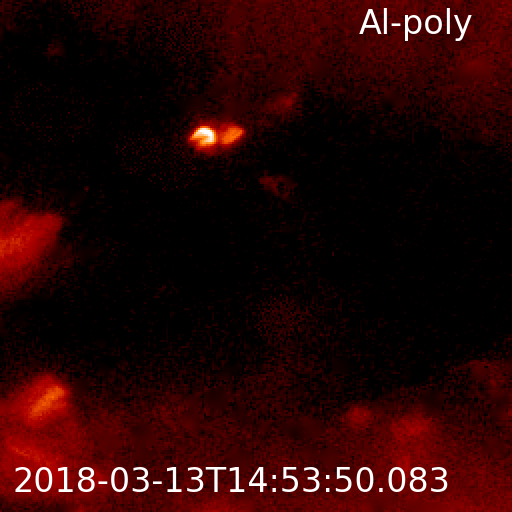
Click for movie. Also available on YouTube.
Demystifying Coronal Holes
|
The solar corona often contains large areas of little or no X-ray emission. The lack of emission creates what looks like a hole in the solar corona, thus the features are named coronal holes. Coronal holes occur in unipolar magnetic field regions (i.e. regions with only positive or negative magnetic fields). Inside the unipolar field, small bipolar magnetic fields (i.e. magnetic field regions with positive and negative fields) emerge. The small bipolar magnetic fields are a leading candidate for structure in high velocity particle streams associated with coronal holes. Streams of solar particles may impact the Earth. Solar particle streams stress Earth's magnetic field causing aurora and/or power outages (i.e. space weather). The ramifications for Earth makes studying coronal holes an important practical and theoretical endeavor. The linked movie shows a false color Hinode/XRT observation of a coronal hole with the Earth for scale. The coronal hole is colored black, while the remaining sun is colored varying intensities of red, which are correlated with X-ray intensity. Inside the coronal hole and directly right of the scale Earth, we see a small, dynamic brightening with roughly the same size as the Earth. The brightening corresponds to a small bipolar magnetic field. Combining the Hinode/XRT X-ray observations with coordinated spectro-polarimeter (Hinode/SOT), near-ultraviolet light (IRIS), and visible light (Dunn Solar Telescope) observations, scientists will analyze the kinematics and magnetic structure of the bipole region. The observed kinematics and magnetic structure may give new insight into the origin of structure in particle streams from coronal holes. Therefore, increase our understanding of coronal holes and the predictive power of space weather. Tweet
Keywords: Quiet Sun, Coronal Hole, Plume Filters: Al-poly, Open |
Prepared by Jakub Prchlik
| Back | Archive | Next |